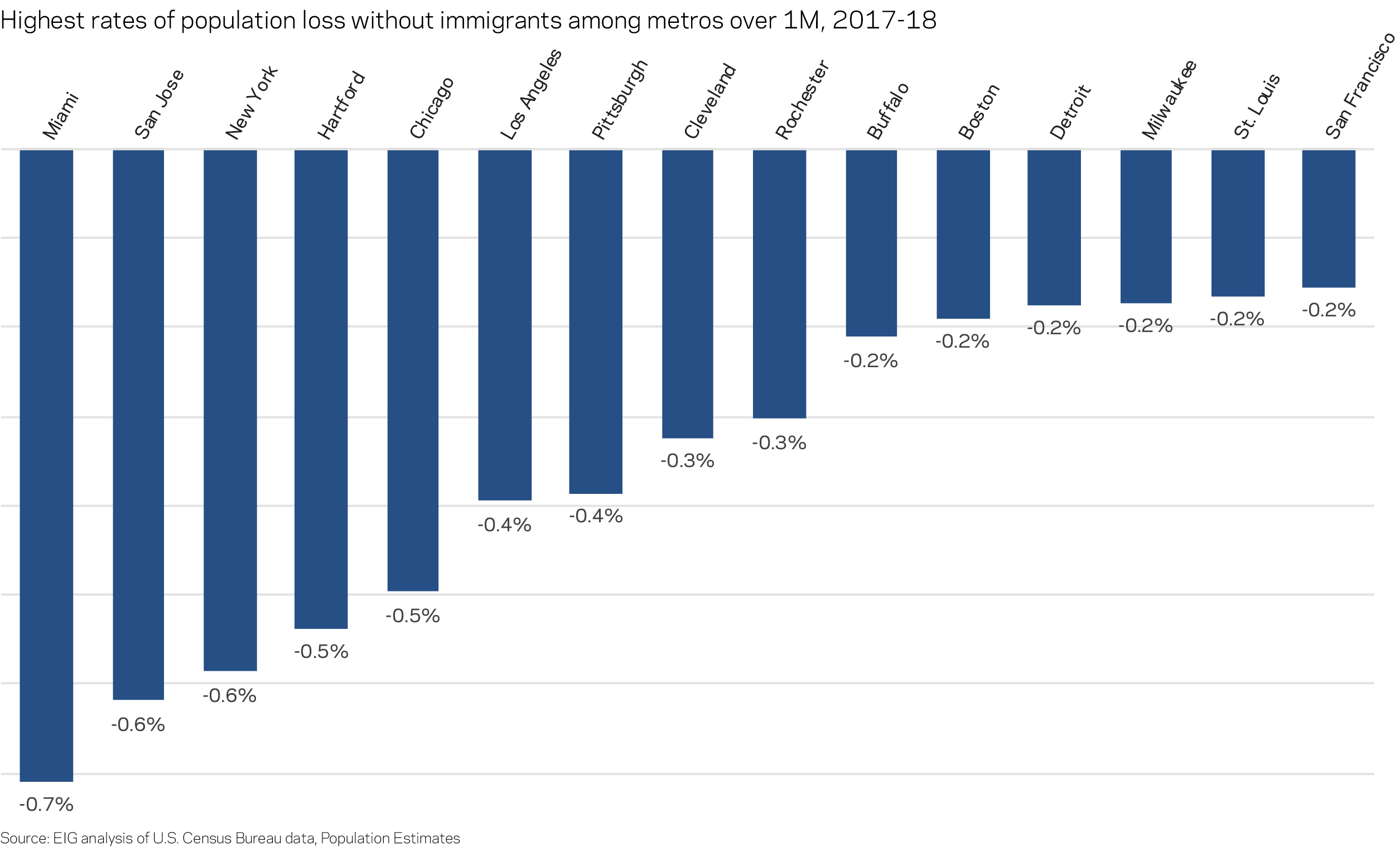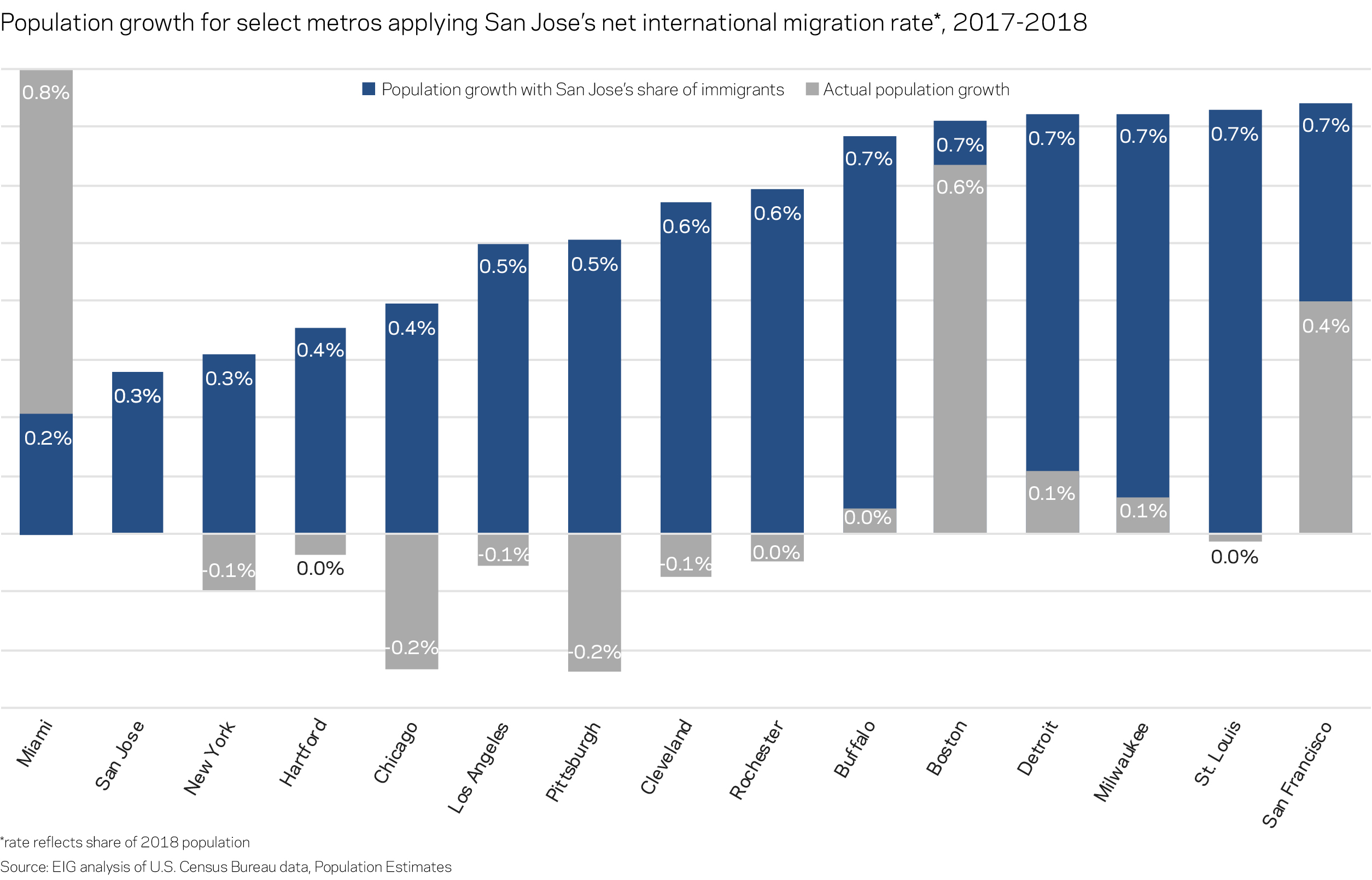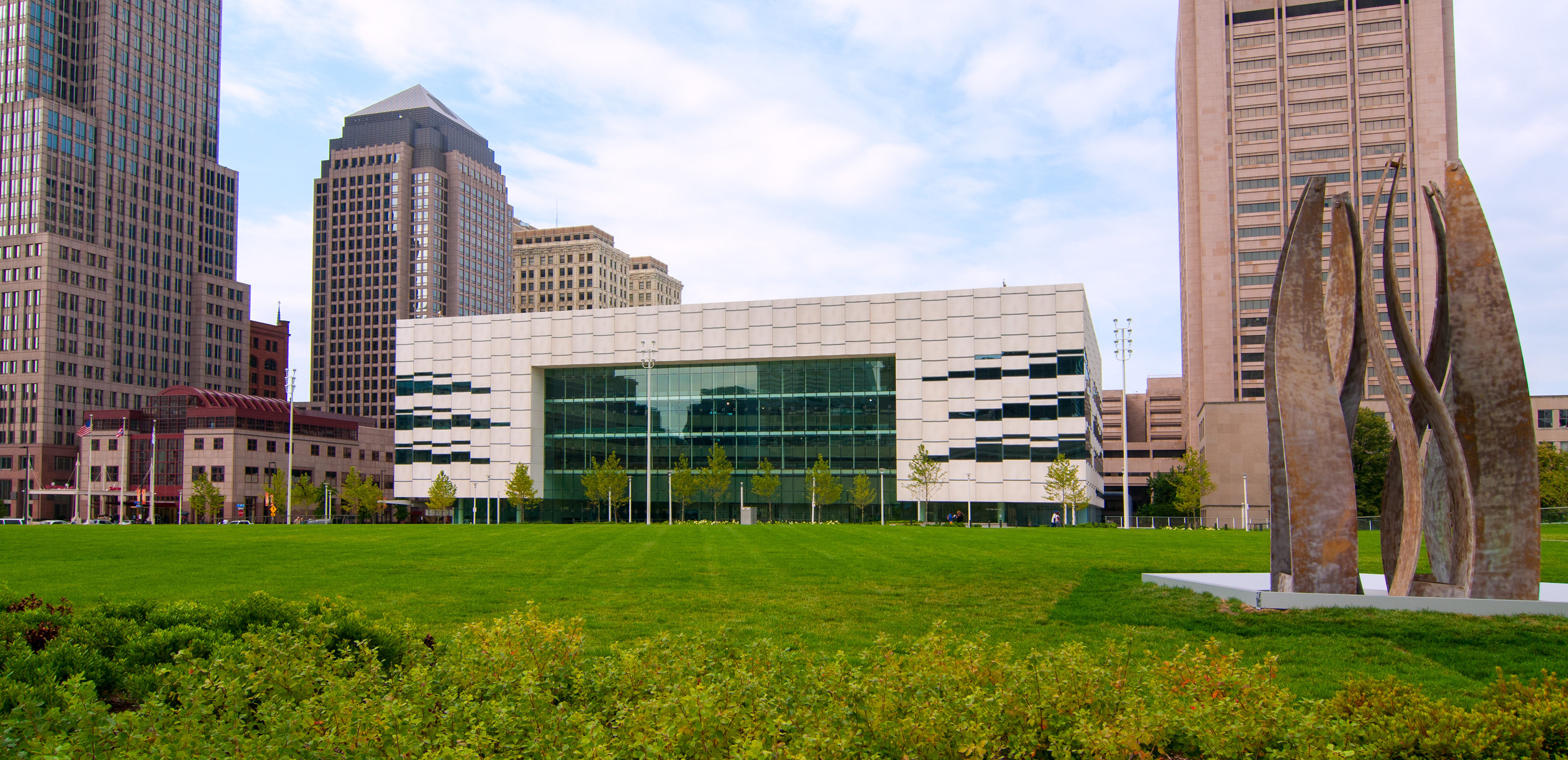Global Center for Health Innovation in Cleveland
Key Findings
- Immigration plays a decisive role in separating the growth trajectories of major U.S. metro areas. Without immigrants, powerhouse metro areas such as New York City and San Jose would have lost population at triple the rate of metro areas such as Milwaukee and St. Louis last year.
- Many metro areas such as Cleveland that lost population from 2017 to 2018 would instead have registered positive growth if they had received new immigrants at even half the rate of San Jose. In fact, with only slightly more immigration, Cleveland’s population growth last year could have matched that of Seattle and Washington, DC.
- Immigration policy should be designed to support regions and metro areas such as St. Louis and Cleveland that are currently contending with population decline yet retain the building blocks of dynamic local economies.
The country’s strongest talent magnets and its most innovative and dynamic metro areas rely on international immigration for their population growth. The latest metro area population estimates from the U.S. Census Bureau for 2018 starkly illuminate the driving role immigration plays in bolstering population growth in many of the country’s most successful and fastest-growing areas. In fact, immigration from abroad explains nearly all of the differential in population growth rates between dynamic and lagging metro areas—between the San Joses and Clevelands of the country, to name two archetypes.
The simplest way to appreciate the difference of international migration is to remove immigrants’ contribution to net population growth across metro areas. This allows us to compare population growth accounting only for domestic migration and natural increase (i.e. the excess of births over deaths). Without the contribution of immigrants, metro areas like Miami, San Jose, and New York would have lost population from 2017 to 2018 at a rate double that of metro areas such as Pittsburgh and Cleveland and triple that of metro areas such as Milwaukee and St. Louis

The flip side: if international migration flows were larger and more evenly distributed to other parts of the country, metro areas such as Buffalo, Detroit, and St. Louis would not appear quite so downtrodden relative to peers. Americans are not choosing to leave these metros any faster than they are in many booming areas; the difference is that these “declining” metros attract fewer international migrants to help offset losses among the domestic population. And this is, in part, the result of immigration policy.
Places such as San Jose, the poster-child for U.S. innovation and dynamism, benefit from the current immigration system that, intentionally or not, concentrates new immigrants in a select handful of traditional immigrant gateways and high-skilled knowledge hubs. It is compelling to imagine how an alternative or enhanced immigration regime might create more pathways for immigrants to settle in a wider array of metro areas. We propose one such possible new avenue—a “Heartland Visa”—in a recent report.
Including immigration, San Jose’s population grew by 0.3 percent from 2017 to 2018, increasing by just over 5,500 residents. Similarly-sized Cleveland, by contrast, lost 1,540 residents, a -0.1 percent decline. This is because while 0.9% of San Jose’s 2018 population was comprised of new international migrants (nearly 17,900 new residents from abroad on net), just 0.2% of Cleveland’s 2018 population was comprised of new international migrants (only 5,100 net new international migrants). Had the Rust Belt metro area enjoyed San Jose’s rate of net international migration, it would have welcomed 18,400 new residents in total last year—a significant boost to a struggling regional economy.
Looked at another way, San Jose lost 23,730 people in domestic outbound migration from 2017 to 2018, meaning that non-immigrants were leaving the city in droves. This loss represents 1.2 percent of its 2018 population and was largely offset by its huge surge of immigrants (the remainder offset by natural increase, or births net deaths). Cleveland also lost people as a result of domestic migration, but only 7,320 of them, or 0.4 percent of its 2018 population. Taking into account natural increase, San Jose needed over 11,000 new immigrants just to break even, whereas for Cleveland, a slightly bigger metro area, a little under 7,000 new immigrants in 2018 would have translated to population growth—not a far stretch from the 5,110 it actually welcomed. In other words, a little more immigration could go a long way in tipping the balance away from decline in many U.S. metro areas.
Looking at the 15 metro areas with more than 1 million residents that lost population at the highest rate last year and providing them with the same share of international migration that San Jose received shows just how transformational international immigration can be for areas wrestling with demographic stagnation or decline. If Cleveland’s net international migration represented 0.9 percent of its 2018 population, like San Jose, instead of 0.2 percent, the metro area would have enjoyed 0.6 percent overall population growth from 2017 to 2018, double the population growth rate of San Jose. While this 0.6% population growth rate would not put Cleveland at the level of the fastest-growing metro areas such as Phoenix, Las Vegas, and Austin, which saw around 2 percent population growth from 2017 to 2018, it would rank Cleveland close to prospering metro areas such as DC, Houston, and Seattle.
Putting it all together, absent international migration, Cleveland’s population loss (or Milwaukee’s, or St. Louis’) would have been considerably worse last year; likewise, with substantially but not unreasonably more international migration, Cleveland would have out-competed San Jose on population growth. And, as our recent research has documented, population growth can make all the difference when it comes to shoring up housing markets, stabilizing municipal finances, and reigniting entrepreneurship in a given area.

Proposals like EIG’s Heartland Visas[1] would allow metros such as Cleveland and Pittsburgh to benefit from the sorts of human capital pipelines that currently fuel the nation’s most dynamic metro areas. Creating new pathways, additive to topline national immigration flows, for more skilled immigrants to come to the United States and settle in more places would in no way undermine the success of metros like San Jose, which remain critical engines of national innovation and growth. Instead, spreading the benefits of immigration would allow more U.S. metro areas to realize their potential, which would in turn support a healthier distribution of regional economic growth and dynamism for the country as a whole.
[1] Pete Buttigieg’s “Community Renewal” visa proposal is modelled on EIG’s Heartland Visa.





